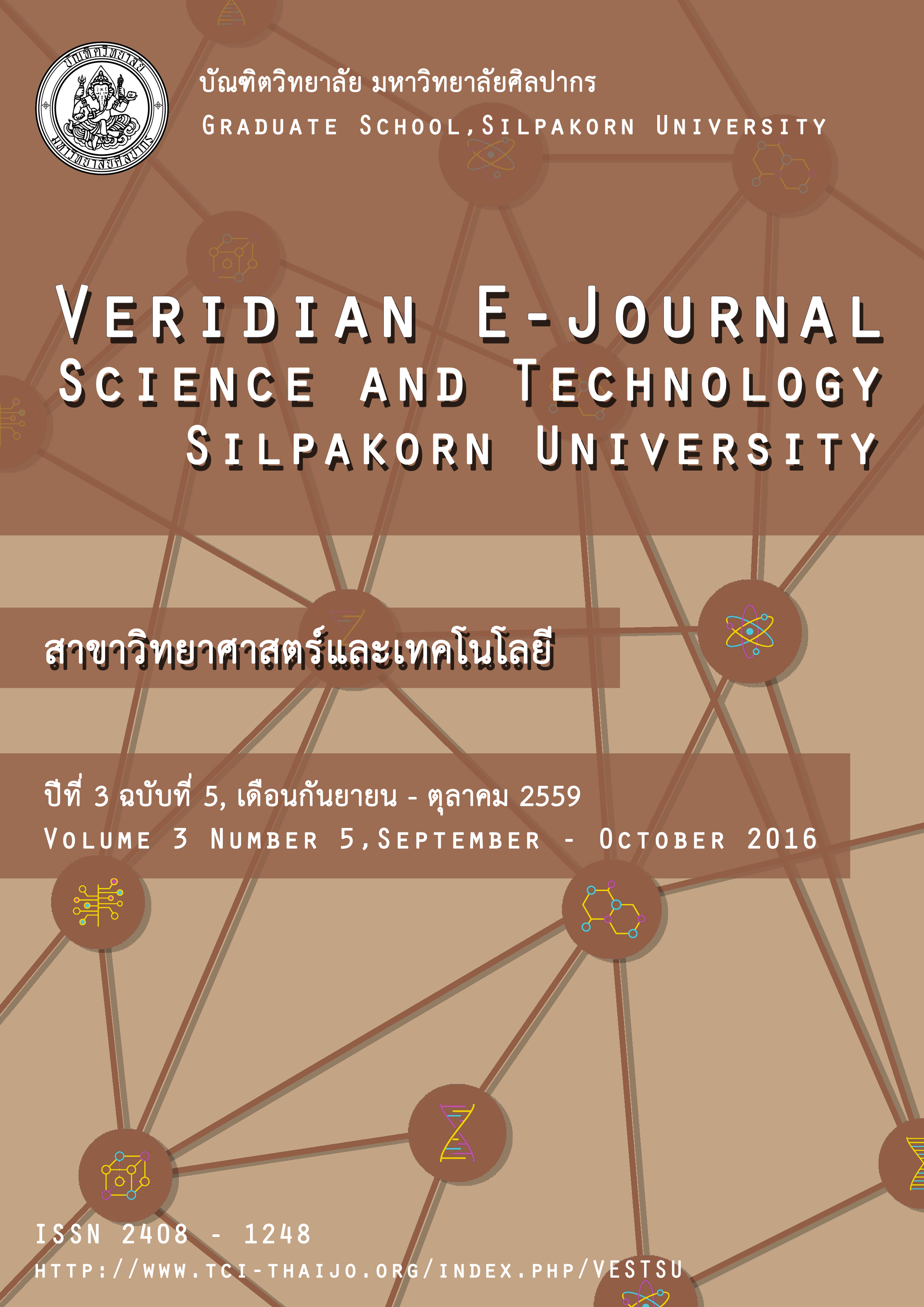Effect of temperature on field latex preservation and potential of membrane fouling from latex serum
Main Article Content
Abstract
This research focuses on the effect of temperature on stability of field latex with chemical conditioning and potential of membrane fouling when filtering latex serum. Difference of temperature was studied and observed at 30 ˚C and 50 ˚C. High temperature could induce the coagulation of latex particles faster than low temperature. The addition of sodium dodecyl (lauryl) sulfate (SDS) had a good effective chemical for stabilization and preservation field latex which could expand storage time to 36 h and 17 h for 30 ˚C and 50 ˚C of incubation temperature. Microfiltration lab scale unit with plane organic membrane was used to evaluate membrane fouling potential when filtering latex serum with and without adding SDS. Latex serum with SDS conditioning showed higher aW values than without SDS addition. aW values of any SDS concentration when filtering latex serum from 40%DRC and 50%DRC of latex suspension were not quite different which were the values in the range of 5.66 x1012 m-2 to 8.50 x1012 m-2. The filtration of latex serum from 60%DRC with SDS conditioning obtained 8 times of aW values, about 14.2 x1012 m-2 to 25.5 x1012 m-2, higher than without conditioning.
งานวิจัยนี้มุ่งเน้นไปที่การศึกษาผลของอุณหภูมิต่อความมีเสถียรภาพของตัวอย่างน้ำยางสดที่มีการปรับสภาพและไม่ปรับสภาพด้วยสารเคมี รวมถึงการศึกษาศักยภาพการเกิดฟาวลิ่งเมื่อกรองซีรัมน้ำยาง โดยที่ผลของอุณหภูมิต่อความมีเสถียรภาพของตัวอย่างน้ำยางสดนั้นได้ทำการศึกษาที่ 30 และ 50 องศาเซลเซียส ซึ่งจากการศึกษาพบว่าอุณหภูมิที่สูงกว่านำไปสู่การจับตัวรวมกันเป็นกลุ่มก้อนของอนุภาคยางเร็วกว่าการศึกษาที่อุณหภูมิต่ำกว่า และพบว่าการเติมสารลดแรงตึงผิวประจุลบชนิด SDS (sodium dodecyl (lauryl) sulfate) ส่งผลบวกต่อเสถียรภาพและการรักษาสภาพของตัวอย่างน้ำยางสด ซึ่งสามารถช่วยยืดระยะเก็บรักษาได้ถึง 36 ชั่วโมงสำหรับการทดสอบที่อุณหภูมิ 30 องศาเซลเซียส และ 17 ชั่วโมงสำหรับการทดสอบที่อุณหภูมิ 50 องศาเซลเซียส ในขณะที่ชุดทดสอบไมโครฟิลเตรชันระดับห้องปฏิบัติการร่วมกับเยื่อกรองแบบแผ่นถูกนำมาใช้เพื่อศึกษาศักยภาพการเกิดฟาวลิ่งเมื่อกรองซีรัมน้ำยางร่วมกับการเติมและไม่เติม SDS ผลการศึกษาพบว่าค่าสัมประสิทธิ์ความต้านทานของซีรัมน้ำยางที่ผ่านการปรับสภาพด้วย SDS มีค่าสูงกว่าในตัวอย่างที่ไม่มีการเติม SDS และพบว่าความเข้มข้นของการเติม SDS ไม่ส่งผลอย่างชัดเจนต่อค่าสัมประสิทธิ์ความต้านทานเมื่อกรองซีรัมน้ำยางที่เตรียมจาก 40%DRC และ 50%DRC ของตัวอย่างน้ำยาง โดยพบว่าอยู่ในช่วง 5.66 x1012 m-2 ถึง 8.50 x1012 m-2 และเมื่อกรองซีรัมน้ำยางที่เตรียมจาก 60%DRC ของตัวอย่างน้ำยางร่วมกับการปรับสภาพด้วย SDS ส่งผลให้ค่าสัมประสิทธิ์ความต้านทานมีค่าสูงกว่า 8 เท่า เมื่อเปรียบเทียบกับสภาวะที่ไม่มีการปรับสภาพใดๆ โดยพบค่าอยู่ในช่วง 14.2 x1012 m-2 ถึง 25.5 x1012 m-2

